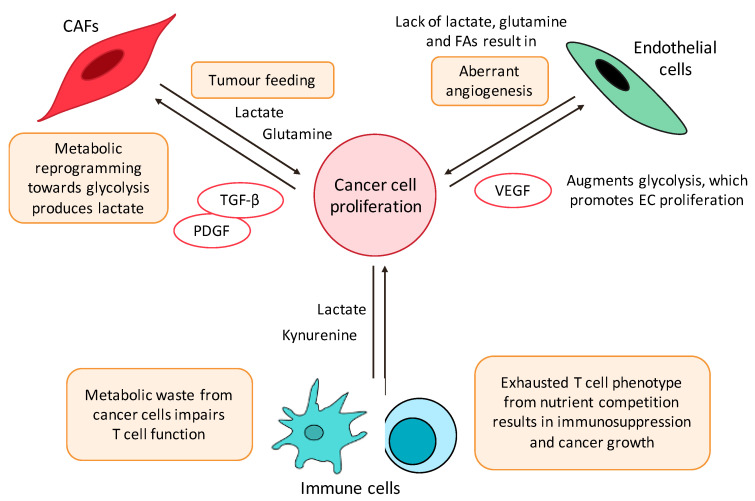Figure 2.
Key players of the metabolic crosstalk in the TME. Key players involved in the extensive, bidirectional crosstalk between tumour cells and the TME include CAFs, ECs, and immune cells. Tumours release factors such as PDGF and TGF-β, causing metabolic reprogramming in CAFs towards aerobic glycolysis, releasing energetic substrates such as lactate into the TME in a phenomenon known as ‘tumour-feeding.’ Meanwhile, tumour depletion of lactate, glutamine, and FAs in the TME lead to EC aberrant angiogenesis, which promotes proliferation and metastasis. VEGF is also released by tumours to promote EC proliferation. Tumour cells also induce metabolic changes to immune cells and cause immunosuppression. This is due to metabolic competition between immune cells and tumours for the same nutrients, producing an ‘exhausted’ T cell phenotype. Metabolic wastes, including lactate and kynurenine, are also released and impair T cell function, causing polarisation towards pro-tumorigenic T cell subtypes.

